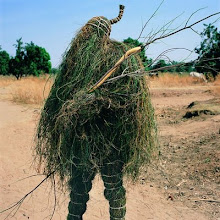
After work today, instead of eating dinner, I filtered all the honey we extracted yesterday and made a peach pie just to show off. I fueled myself with an entire bag of Paul Newman mint chocolate chip cookies and a glass of water and the occasional finger lick of honey. Occasional, hah! I probably licked about a pint of honey off my hands during the whole process. Don't worry, I washed them each time with hot soapy water.
Filtering and bottling honey is a little like watching paint dry. You have one giant bucket full of honey straight from the extractor with bits of wax and bee parts and other weird stuff that got in the honey somehow. Then you have an empty bucket with several layers of metal strainers of different mesh sizes and then a few mesh paint socks under that all strapped into a five gallon bucket with a bungee cord so it hangs suspended in the bucket. Then you pour the unfiltered honey into the top of the first strainer contraption, which is only about 2 inches deep, very inefficient, until it passes through to sit in a glob in the paint sock below. The paint sock has a pretty fine mesh so the honey filters very slowly through this section. Finally it reaches the bottom of the bucket and you are ready to open the gate valve in the bottom of the bucket and fill the glass jars with fresh clean honey.
Repeat for about two hours until you finally have poured the entire contents of the bucket of honey through the strainers. It takes forever, I mean it's honey, right? You often have to scrape off the globs of wax clogging the wire mesh of both sets of strainers plus the paint socks, plus you have to make sure there is enough space between the various strainers for the honey to slowly drip drip drip down to the bucket. I had it sitting in the sun all day so it would be more liquidy, but by the time I got home it had cooled off a bit so the honey was pretty thick again. I think warmer honey would go a lot faster.
There has got to be a better way to do this. My first improvement would be to make a deeper first layer of straining so I could wander off for half an hour rather than just having 10 minutes to wait for the two inches of honey to drip down. Second, I would find a way to set the buckets up so I could just open a gate valve and pour the honey from the first bucket into the strainer rather than the current messy heavy method of lifting the bucket up and pouring it in, hovering over it and trying to scoop the drips that are escaping down the sides back into the bucket where they belong with one hand while desperately trying not to drop the whole thing into the dirt in my front yard with the other.

By the end of my filtering process I had filled up about 4 gallons of honey in various size mason jars. There is an unknown amount in the bucket slowly dripping through the filters right now and I may get another gallon out of it. I thought we had seven gallons, but I guess not. Still, it is a LOT of honey.


No comments:
Post a Comment